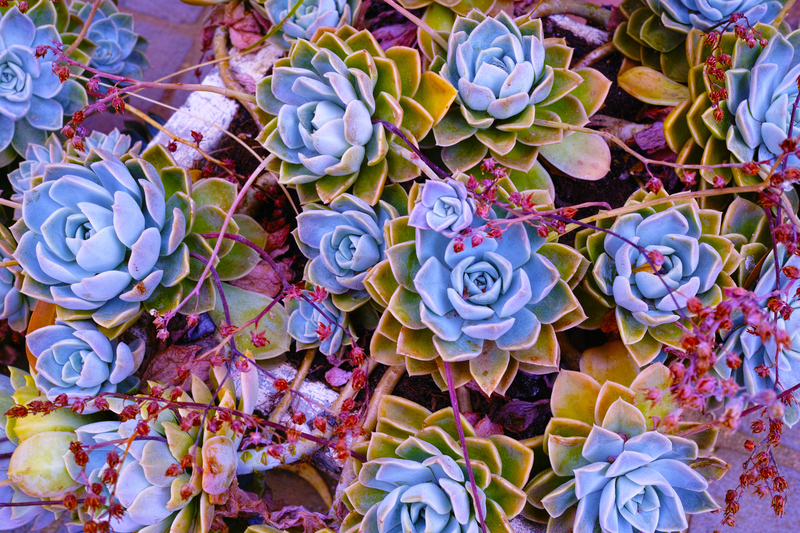Proven Methods to Insulate Garden Plants During Winter
Posted on 26/06/2025
When icy winds come knocking and temperatures drop, gardeners everywhere worry about their beloved plants. Winter's chill can leave delicate roots, stems, and buds damaged, or worse, kill them altogether. Effective insulation techniques not only protect garden plants from frostbite but also ensure lush growth come spring.
This comprehensive guide will explore tried-and-true methods for insulating garden plants during the winter months. Whether you're a seasoned horticulturist or a casual green thumb, these strategies will help your plantings survive, thrive, and bloom even after harsh winters.
Understanding Why Winter Plant Insulation Matters
Many garden plants are not naturally adapted to freezing temperatures, especially if they're native to milder climates. Soil freezes, roots can become brittle, and exposed leaves risk desiccation. Insulating your garden plants during winter safeguards them by:
- Retaining soil warmth around roots
- Shielding stems and leaves from frost and windburn
- Preventing sudden thawing and freezing cycles that damage tissues
Proper insulation is critical for non-native species, container plants, perennials, and those in exposed locations. Now, let's discover different methods to successfully insulate your plants.

1. Mulching: Nature's Blanket for Plants
Perhaps the most essential and time-honored way to insulate garden plants in winter is mulching. Mulches act as a protective layer atop the soil, minimizing temperature fluctuations and moisture loss.
Types of Mulch for Winter Protection
- Organic Mulches: Straw, shredded leaves, pine needles, wood chips – These not only insulate but break down, enriching the soil.
- Inorganic Mulches: Landscape fabric, black plastic – Good for moisture retention but should be used with caution to allow airflow.
Application Tips: Spread mulch about 2-4 inches thick around the base of plants, but avoid piling directly against stems which can lead to rot or provide hiding spots for pests. Wait until soil starts to freeze so rodents don't take up residence underneath!
2. Coverings: Cozying Up Sensitive Plants
For delicate perennials or young shrubs, covering your garden plants provides invaluable winter insulation. This is especially important for plants that are borderline hardy in your zone.
Best Covering Materials
- Burlap: Breathable, durable, and effective at blocking wind and sun.
- Frost Cloths and Garden Blankets: Lightweight fleece fabrics specifically designed for horticultural insulation.
- Old Sheets or Bedspreads: A cost-effective, upcycled solution in a pinch.
- Plastic Sheeting: Use with caution, as it can trap moisture and overheat if the sun emerges. Always prop above leaves with stakes.
How to Apply Covers: Drape the chosen material over the plant, securing it at the base with rocks, bricks, or stakes. Make sure to remove covers on sunny winter days (unless a hard freeze is underway), so plants can breathe and absorb light.
3. Windbreaks: Shielding Garden Plants from Bitter Blasts
Harsh winter winds can spell disaster for exposed plants. Setting up windbreaks is a proven method to insulate your garden and keep temperatures around plants more stable.
Easy DIY Windbreak Ideas
- Temporary Fencing: Erect snow fence, chicken wire, or wooden pallets to disrupt prevailing winds.
- Natural Barriers: Plant dense evergreen hedges or place tall potted shrubs for an organic wind shield.
- Burlap Screens: Attach burlap to stakes or latticework for a breathable, movable wall around plant clusters.
Position windbreaks on the north and west sides of your beds, where the coldest winds originate.
4. Cloching and Domes: Insulating Individual Plants
When you want to protect young, tender, or particularly valuable plants, individual barriers like cloches and mini greenhouses are ideal.
Types of Cloches and Domes
- Glass Cloches: Classic bell jars trap heat and humidity.
- Plastic Bottles: Repurpose large, clear water bottles by cutting off their bottoms and placing over seedlings.
- Wire Frames with Frost Cloth: Wire mesh domes covered with garden fleece combine rigidity and insulation.
- Pop-Up Greenhouse Domes: Commercial products designed for easy installation over single plants.
Tip: When using cloches, make sure they're ventilated on sunny days to prevent overheating or fungal growth.
5. Watering Wisely: Moist Soil as Winter Insulation
Believe it or not, how you water your garden before and during winter significantly affects insulation. Moist soil retains more heat than dry soil, providing a thermal buffer for roots.
- Deeply water garden beds before the first hard freeze.
- Keep watering evergreens during warm winter spells if soil is dry and not frozen.
Avoid waterlogging, which can freeze and damage roots instead. The goal is steady, moderate moisture levels.
6. Grouping Plants for Mutual Protection
An often-overlooked yet remarkably effective winter plant insulation technique is strategic planting. By grouping pots and in-ground plants close together, you create microclimates with enhanced warmth, humidity, and wind protection.
- Cluster containers together and place near a sheltered wall.
- Build raised beds for frost-tender species--soil in raised beds warms faster and drains better.
- Layer plants by height: Tall hardier specimens shield shorter, tender ones.
This simple method can make a significant difference in reducing frost damage.
7. Insulating Roots: Wrapping and Burying Containers
Plants grown in pots are more vulnerable to winter cold due to exposed roots. For container garden insulation, try the following:
- Wrap pots in burlap, bubble wrap, or old blankets for extra insulation.
- Bury pots in the ground or in a pile of mulch/leaves up to the rim for minimal temperature fluctuation.
Choose frost-proof pots and raise them off the ground to prevent standing water and freeze-thaw breakage.
8. Anti-Desiccant Sprays: Preventing Winter Burn
Evergreens and broadleaf plants are prone to winter desiccation--they continue to lose moisture even when their roots can't absorb water from frozen soil. Applying anti-desiccant sprays creates a thin, protective barrier on leaves that reduces water loss.
- Look for commercial anti-desiccants at garden centers.
- Apply according to label instructions, typically when daytime temperatures are above freezing.
These sprays are especially effective for boxwoods, hollies, rhododendrons, and English ivy.
9. Timing: When to Apply Winter Plant Insulation
It's crucial to insulate garden plants at the right time. Applying mulches and covers too early can trap heat-loving pests and encourage mold. Too late, and plants may already be stressed or damaged.
- Wait until after the first light frost so plants have entered dormancy.
- Monitor weather forecasts regularly and be ready to cover plants when hard freezes are predicted.
Special Considerations for Different Types of Garden Plants
Not all plants are created equal--some require extra attention when it comes to insulating your winter garden.
Perennials
- Cut back stems after dormancy and mulch heavily.
- Consider bucket or box covers for prized ornamentals and tender perennials.
Roses
- Mound soil or compost around the base (known as "hilling").
- Wrap canes with burlap for extra protection in cold zones.
Vegetable Gardens
- Use row covers, low tunnels, or cold frames for hardy greens and overwintering crops.
- Mulch heavily over root vegetables like carrots and beets for easier winter harvest.
Fruit Trees and Shrubs
- Apply trunk wraps or plastic tree guards to prevent sunscald and rodent gnawing.
- Mulch widely around roots but keep clear of trunks or stems.
Common Winter Insulation Mistakes (and How to Avoid Them)
- Smothering plants with too much mulch or airtight covers - Ensure breathability to prevent rot.
- Leaving covers on during warm, sunny days - Remove or vent as needed.
- Neglecting to water during winter droughts - Monitor soil moisture and water if necessary.
- Forgetting to check for pests or mold under insulation - Lift and inspect regularly.

Frequently Asked Questions About Winterizing Garden Plants
How do I know if my plants need insulation?
- Research your plant's cold hardiness zone.
- If a plant is rated for a warmer zone than your garden, give it extra protection.
Can I use household materials for winter plant insulation?
- Yes! Old blankets, bubble wrap, cardboard boxes, or even newspaper can be effective in a pinch.
Do evergreens need insulation?
- Absolutely--they are susceptible to windburn and desiccation. Protect with anti-desiccant sprays and windbreaks.
Will snow harm my garden plants?
- Actually, snow acts as a natural insulator, protecting against subzero temperatures.
Conclusion: Insulate Your Garden Plants for a Resilient Winter and Soaring Spring
By leveraging these proven winter garden insulation methods, you'll greatly reduce the risk of winter kill, root damage, and growth setbacks. Smart insulation preserves your garden's investment and ensures an incredible burst of growth come springtime.
Experiment with a variety of techniques, adapting as needed to your local climate and specific plant needs. With advanced planning and a little effort, you can transform your garden's winter into a season of rest, not risk!
For more guidance on how to insulate garden plants during winter or tackle specific plant types, explore additional resources from your local extension service or trusted gardening books. Stay warm, and happy gardening!



